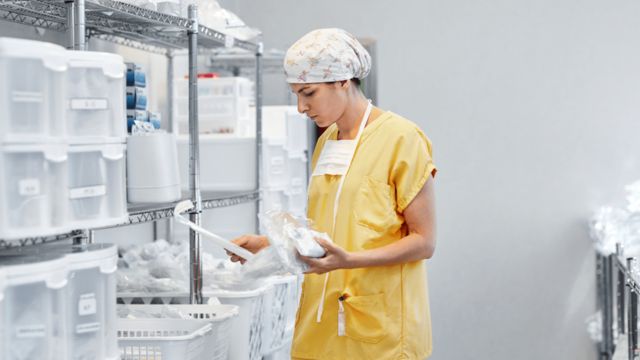Critical elements in guaranteeing patient safety, lowering healthcare expenses, and preserving the integrity and efficacy of medical items are appropriate storage and maintenance of medical supplies. Whether you run a tiny healthcare institution, clinic, or hospital, knowing how to properly store and treat medical supplies will greatly increase operational effectiveness and adherence to healthcare standards.
This extensive book will go over key advice and best practices to help you keep your medical supplies in ideal shape, therefore guaranteeing their dependability and lifetime.
1. Understand the Types of Medical Supplies
Medical supplies encompass a wide range of products — from disposable gloves, syringes, and bandages to more sensitive items like sterile instruments and diagnostic devices. Proper storage requirements vary based on the type and nature of these supplies:
-
Disposable items: Gloves, syringes, gowns — typically have a shelf life and need to be stored in dry, temperature-controlled environments.
-
Sterile equipment: Instruments, surgical tools — must be kept in sterile packaging, away from contaminants.
-
Pharmaceuticals and chemicals: Require strict temperature and humidity controls.
Before storing any supply, familiarize yourself with its manufacturer’s instructions and expiration dates to avoid degradation or contamination.
2. Maintain an Organized Storage Environment

Temperature and Humidity Control
Temperature and humidity are crucial factors that affect the stability of medical supplies. For most products:
-
Maintain a storage temperature between 15°C to 25°C (59°F to 77°F).
-
Humidity levels should generally be kept between 30% to 50% to prevent mold growth or material degradation.
Certain items, such as vaccines or pharmaceuticals, may require refrigerated or frozen storage — always follow product-specific guidelines.
Avoid Direct Sunlight and Exposure to Chemicals
Exposure to direct sunlight can degrade packaging and contents, especially plastics and pharmaceuticals. Store supplies in opaque containers or shaded areas. Also, keep supplies away from hazardous chemicals or cleaning agents that could cause contamination.
3. Use Proper Storage Equipment
Invest in appropriate storage solutions to safeguard your supplies:
-
Shelving units and racks: Use sturdy, adjustable shelving to keep supplies off the floor and organized.
-
Bins and containers: Use labeled, sealed containers for smaller items to prevent dust and moisture exposure.
-
Refrigerators and freezers: For temperature-sensitive items, use medical-grade refrigeration units with temperature monitoring.
Ensure that all storage equipment is regularly cleaned and maintained to prevent dust accumulation and contamination.
4. Implement First-In, First-Out (FIFO) Inventory Management
Proper inventory management is vital to prevent wastage of supplies due to expiration. The FIFO system ensures that the oldest stock is used first:
-
Arrange supplies with earlier expiration dates at the front.
-
Regularly check expiration dates and remove expired items immediately.
-
Keep accurate records of stock received, used, and disposed of.
Using inventory management software can greatly improve accuracy and tracking efficiency.
5. Regular Cleaning and Maintenance
Medical supply storage areas should be cleaned regularly:
-
Dust and sanitize shelves and containers weekly.
-
Address any signs of pest infestation immediately.
-
Conduct routine audits to check for damaged or contaminated supplies.
Also, ensure that personnel handling supplies wear appropriate PPE and follow hygiene protocols to avoid cross-contamination.
6. Training and Standard Operating Procedures (SOPs)
Staff responsible for handling and storing medical supplies should receive thorough training on:
-
Proper handling techniques.
-
Storage requirements and environmental controls.
-
Emergency procedures in case of temperature excursions or contamination.
Develop and maintain clear SOPs that detail all storage and maintenance processes. Regularly review and update these procedures to comply with evolving regulations.
7. Handling Sterile and Sensitive Supplies
Sterile supplies require extra caution:
-
Store in clean, dust-free areas with limited access.
-
Avoid excessive handling to preserve sterility.
-
Inspect packaging regularly for integrity.
For sensitive devices and instruments, perform routine maintenance such as calibration, lubrication, or sterilization as recommended by manufacturers.
8. Monitor and Document Environmental Conditions
Consistent monitoring is key to maintaining storage standards:
-
Use temperature and humidity data loggers in storage rooms.
-
Document readings daily and investigate any deviations.
-
Maintain records for regulatory compliance and audits.
9. Plan for Emergency Situations
Unexpected power outages or equipment failures can compromise supply integrity:
-
Have backup power systems or generators for refrigeration units.
-
Develop contingency plans for relocating supplies if environmental conditions become unsuitable.
-
Train staff on emergency protocols to act quickly and minimize damage.
Conclusion
Healthcare quality and safety depend fundamentally on correct storage and upkeep of medicinal supplies. Healthcare facilities can greatly lower waste, prevent contamination, and guarantee that medical supplies perform effectively when needed by knowing product requirements, preserving orderly and controlled environments, implementing efficient inventory systems, and guaranteeing staff training.
Using these professional guidelines will improve operational effectiveness and assist safeguard patients and healthcare providers. To help to support the best outcomes in clinical treatment, keep proactive and consistent in your attitude to medical supply management.
Ready to Equip Your Facility with Quality Medical, Clinical, and Manufacturing Supplies?
Discover our wide range of reliable products designed to meet your industry needs.
Contact JandJSupplies today for expert support and seamless supply solutions!








